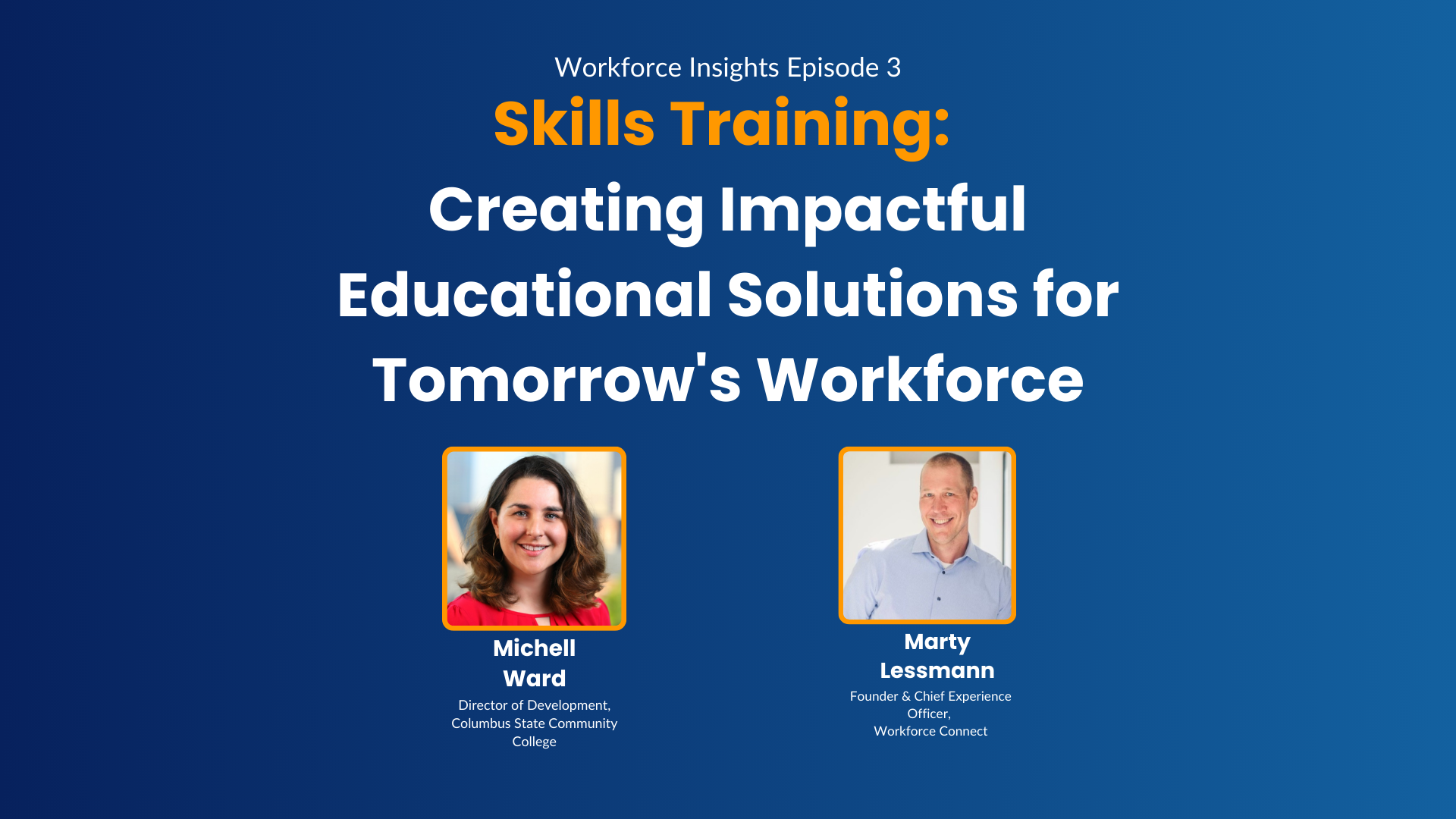Executive Summary
The success of workforce development programs hinges on effective partnerships between educational institutions, employers, and industry associations. This Workforce Insight explores the types of workforce partnerships and how integrated strategies can maximize the impact of work-based learning for both students and employers. By understanding the spectrum of workforce partnerships, educational institutions can develop strategies to better align their programs with industry needs and equip students with the skills required for successful careers.
Introduction
In today’s fast-changing job market, adapting and gaining hands-on experience is essential for students preparing to enter the workforce. Work-based learning provides an effective way for students to acquire practical skills while still in school, with workforce partnerships playing a crucial role in these efforts. The American Association of Community Colleges (AACC, 2023) reports that over 80% of community colleges engage in various forms of workforce partnerships, from advisory roles to apprenticeship training. These collaborations include industry advisors who help align curricula with market needs, mentorship programs that offer career guidance and networking, and practical experiences like job shadowing and internships. Additionally, co-developed courses and ongoing skill-building initiatives help both students and current employees stay competitive in the evolving job landscape.
This Workforce Insight covers
- Work-based Learning Continuum
- Workforce Partnership Models
- Strategies for integrating partnership models to maximize workforce development impact.
“States will always back partnerships, this tool allows us to showcase those partnerships.”

Dr. Stephanie Fuji
President, Arapahoe Community College
Work-Based Learning Continuum
Work-based learning is one of the most effective ways to prepare students for the workforce. The Work-based Learning Continuum, from TalentFOUND, Colorado’s talent development network, maps the spectrum of work-based learning experiences, from those primarily within educational settings to those fully on the job. It clarifies the roles of stakeholders and improves communication between partners.

Understanding the Types of Workforce Partnerships
Workforce partnerships can take many forms, each serving different needs and goals for students and employers. These partnerships vary in level of involvement, scope, and the specific benefits they provide.
- Prioritization: Industry advisors collaborate with educational institutions to ensure academic programs remain relevant to workforce needs. They provide insights into emerging trends, identify skill gaps, and recommend curriculum updates. Their guidance helps keep courses aligned with industry standards, ensuring students develop the skills employers seek. Additionally, advisors often connect students with networking opportunities, offering career guidance and potential job leads.
- Mentorship and Networking: Partnerships between schools and industry professionals provide students with mentorship and career advice. Mentors guide career goals, share role-specific insights, and help students navigate the industry, enabling better career decisions. These programs often include networking events, connecting students with professionals, and potential job opportunities.
- Site Visits and Job Shadows: Worksite tours and job shadowing partnerships give students firsthand insights into various roles and industries. Employers collaborate with schools to host facility tours, offering a behind-the-scenes look at daily operations. Job shadowing allows students to follow professionals, providing a deeper understanding of job responsibilities and required skills.
- Co-Developed Curriculum and Project-Based Learning: Educational institutions and industry partners co-develop curricula to meet job market needs, creating new courses or updating existing ones with relevant technologies and skills. These collaborations often include project-based learning, where students tackle real-world challenges, applying their knowledge while providing businesses with fresh insights.
- Skill Training and Upskilling: Employers partner with community colleges and technical schools to provide ongoing training, workshops, and certification courses for their employees. These programs help workers stay competitive and can be delivered at the institution or on-site for convenience. Students are also sometimes offered these programs to gain valuable professional skills and access to careers with these employers.
- Internships, Apprenticeships, and Co-op Programs: Internships, apprenticeships, and co-op programs offer students on-the-job training, allowing them to gain practical skills and industry exposure. These experiences often lead to job offers, as employers can assess potential hires directly. Apprenticeships provide structured training, blending classroom learning with hands-on work, while pre-apprenticeships prepare students for advanced roles.
How to Combine Different Partnership Models for Maximum Impact
Combining various workforce partnership models can amplify the impact of workforce development efforts. By offering a mix of work-based learning opportunities and formal training programs, community colleges can provide students with comprehensive preparation for the job market.
- Stackable Credentials: One effective strategy is to create stackable credentials, allowing students to earn short-term certifications that count toward a longer-term degree. This approach enables students to enter the workforce quickly while providing a pathway for continuous learning. According to the Community College Research Center (CCRC, 2023), 70% of community colleges have adopted stackable credential models, making it easier for students to advance their careers.
- Blended Learning Models: Blended models that combine classroom instruction with work-based learning experiences, such as internships or apprenticeships, offer a holistic approach to education. These models ensure that students gain both the technical skills and the soft skills—like communication and teamwork—necessary for success in the workplace.
- Integrated Advisory Councils and Training Programs: Colleges can further enhance their impact by integrating industry advisory councils with their training programs. These councils help ensure that curricula stay up-to-date while training programs provide students with the certifications and hands-on experience employers value. For example, the Ohio TechNet consortium has effectively used this model to train over 5,000 workers in advanced manufacturing since its inception (Ohio TechNet, 2023).
Conclusion
Workforce partnerships are a cornerstone of modern community college efforts to address skills gaps and prepare students for in-demand careers. From advisory councils to apprenticeships, these partnerships provide a spectrum of opportunities for students and employers alike. By combining different partnership models—such as work-based learning and training programs—community and technical colleges can maximize their impact, ensuring students are prepared for a dynamic labor market. Moving forward, these institutions must continue to adapt and innovate, leveraging the full range of partnership models to meet the needs of students, employers, and the broader economy.
References
- American Association of Community Colleges. (2023). The Role of Community Colleges in Workforce Development. AACC Research Brief.
- Community College Research Center. (2023). Stackable Credentials: Building Pathways to Career Success. CCRC Working Paper.
- Credential Engine. (2023). The Credential Landscape in the United States. Credential Engine Report.
- Dallas College. (2023). Advanced Manufacturing Workforce Program Overview.
- Lumina Foundation. (2022). Investing in Workforce Partnerships: A Guide for Community Colleges.
- National Association of Colleges and Employers. (2022). The Value of Internships for College Graduates. NACE Report.
- Ohio TechNet. (2023). Annual Impact Report on Advanced Manufacturing Training.




